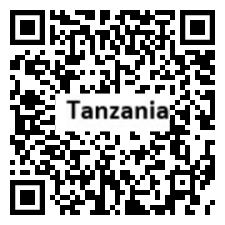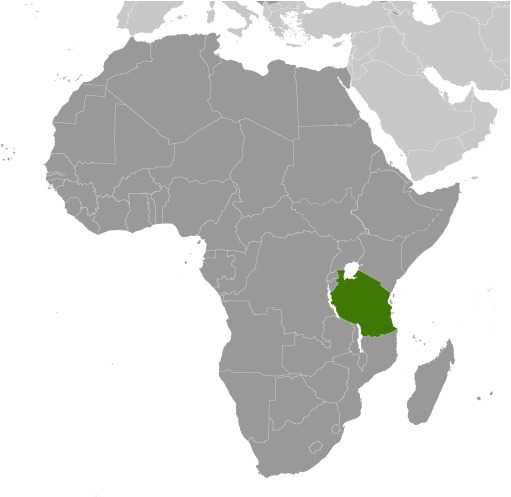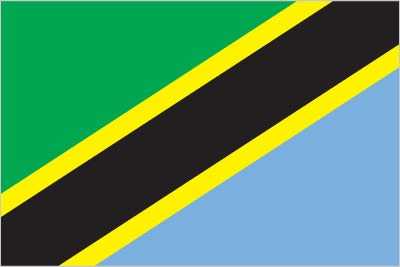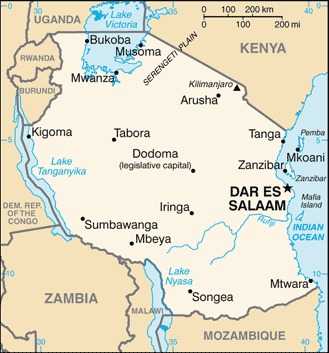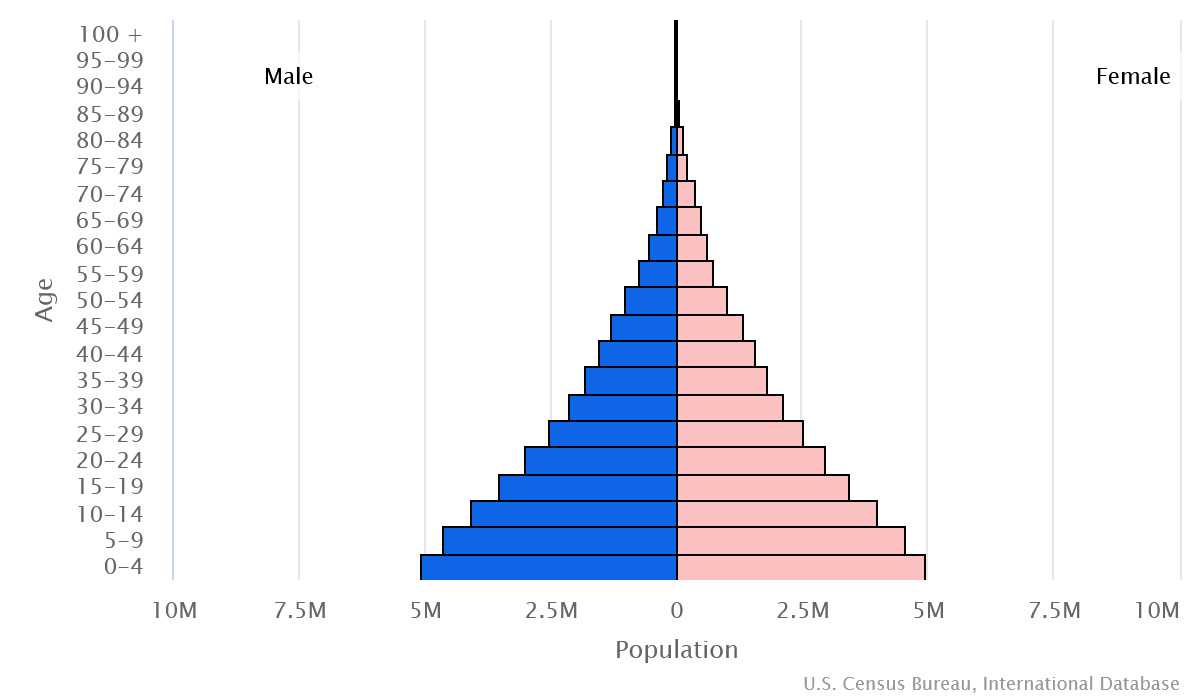Introduction
Background
Tanzania fell under German rule during the late 19th century as part of German East Africa. After World War I, Britain governed the mainland as Tanganyika. Shortly after achieving independence from Britain in the early 1960s, Tanganyika and Zanzibar merged to form the United Republic of Tanzania in 1964.
Geography
Area
total : 947,300 sq km
land: 885,800 sq km
water: 61,500 sq km
Climate
varies from tropical along coast to temperate in highlands
Natural resources
hydropower, tin, phosphates, iron ore, coal, diamonds, gemstones (including tanzanite, found only in Tanzania), gold, natural gas, nickel
People and Society
Population
total: 67,462,121
Ethnic groups
mainland - African 99% (of which 95% are Bantu consisting of more than 130 tribes), other 1% (consisting of Asian, European, and Arab); Zanzibar - Arab, African, mixed Arab and African
Languages
Kiswahili or Swahili (official), Kiunguja (name for Swahili in Zanzibar), English (official, primary language of commerce, administration, and higher education), Arabic (widely spoken in Zanzibar), many local languages; note - Kiswahili (Swahili) is the mother tongue of the Bantu people living in Zanzibar and nearby coastal Tanzania; although Kiswahili is Bantu in structure and origin, its vocabulary draws on a variety of sources including Arabic and English; it has become the lingua franca of central and eastern Africa; the first language of most people is one of the local languages
Religions
Christian 63.1%, Muslim 34.1%, folk religion 1.1%, Buddhist <1%, Hindu <1%, Jewish <1%, other <1%, unspecified 1.6% (2020 est.)
Population growth rate
2.72% (2024 est.)
Government
Government type
presidential republic
Capital
name: Dodoma; note - Dodoma was designated the national capital in 1996; Dar es Salaam, the original national capital, is the country's largest city and commercial center
Executive branch
chief of state: President Samia Suluhu HASSAN (since 19 March 2021)
head of government: President Samia Suluhu HASSAN (since 19 March 2021); Prime Minister Kassim MAJALIWA (since 20 November 2015) has authority over the day-to-day functions of the government, is the leader of government business in the National Assembly, and is head of the Cabinet
Legislative branch
description: unicameral National Assembly or Parliament (Bunge) (393 seats; 264 members directly elected in single-seat constituencies by simple majority vote, 113 women indirectly elected by proportional representation vote, 5 indirectly elected by simple majority vote by the Zanzibar House of Representatives, 10 appointed by the president, and 1 seat reserved for the attorney general; members serve 5-year terms); note - in addition to enacting laws that apply to the entire United Republic of Tanzania, the National Assembly enacts laws that apply only to the mainland; Zanzibar has its own House of Representatives or Baraza La Wawakilishi (82 seats; 50 members directly elected in single-seat constituencies by simple majority vote, 20 women directly elected by proportional representation vote, 10 appointed by the Zanzibar president, 1 seat for the House speaker, and 1 ex-officio seat for the attorney general; elected members serve a 5-year term)
Economy
Economic overview
emerging lower middle-income East African economy; resource-rich and growing tourism; strong post-pandemic recovery from hospitality, electricity, mining, and transit sectors; declining poverty; stable inflation; gender-based violence economic and labor force disruptions
Real GDP (purchasing power parity)
$234.05 billion (2023 est.)
$222.506 billion (2022 est.)
$212.79 billion (2021 est.)
Real GDP per capita
$3,600 (2023 est.)
$3,500 (2022 est.)
$3,500 (2021 est.)
Agricultural products
cassava, maize, sweet potatoes, sugarcane, bananas, milk, rice, vegetables, beans, sunflower seeds (2022)
Industries
agricultural processing (sugar, beer, cigarettes, sisal twine); mining (diamonds, gold, and iron), salt, soda ash; cement, oil refining, shoes, apparel, wood products, fertilizer
Exports
$11.986 billion (2022 est.)
$9.874 billion (2021 est.)
$8.555 billion (2020 est.)
Exports - partners
India 27%, UAE 11%, South Africa 9%, Kenya 5%, Rwanda 5% (2022)
Exports - commodities
gold, raw copper, refined copper, copper ore, coconuts/Brazil nuts/cashews (2022)
Imports
$16.674 billion (2022 est.)
$11.61 billion (2021 est.)
$9.151 billion (2020 est.)
Imports - partners
China 30%, India 18%, UAE 11%, Democratic Republic of the Congo 5%, Saudi Arabia 2% (2022)
Imports - commodities
refined petroleum, refined copper, garments, fertilizers, plastics (2022)
Exchange rates
Tanzanian shillings (TZS) per US dollar -
Page last updated: Wednesday, July 24, 2024
